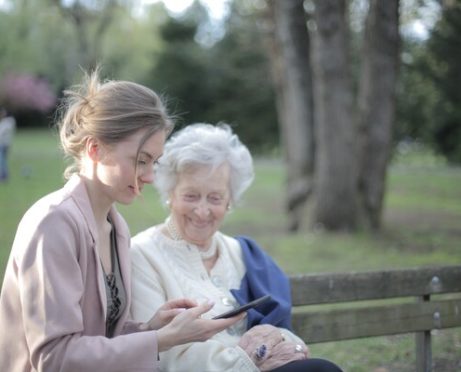This special series is part of CentSai’s commitment to financial literacy at every level. We’re collaborating with financial education advocate Sam X Renick on a series of short interviews, videos, and tips. In this installment, Timothy Law Snyder, Ph.D., president of Loyola Marymount University (LMU), tells Renick his childhood money memories and shares advice for teaching kids about money.

Childhood Money Lessons
Sam X Renick: What is the most important money habit you learned as a child? Please share the story of how you learned the habit and tell us about the impact it has had on you throughout your life.
Timothy Law Snyder: When I was young, I had a paper route, delivering papers in a nearby neighborhood via bicycle. It was tough work. I’d pick up a heavy load of papers a couple of miles away, put them into baskets on my bike, and ride back and deliver them. In those days, you had to go door-to-door each month to “collect.” It was on you. You paid for the papers you delivered, so you had to collect from everybody to make your expected earnings.
During the Christmas season, my better customers gave me a tip — usually $5 to $20. The $20 “big one” was always my goal. One day, a customer named Mr. Goldberg gave me an envelope. It contained a lovely note, speaking to how reliable I was, how nice I was, and so on. Also inside? A beautiful, uncirculated $2 bill. I was a coin collector and had never seen a $2 bill. I still have it!
Mr. Goldberg’s kindness, thoughtfulness, and cleverness taught me that money is a form of compensation, but that many other forms of compensation — even recognition — were just as important.
That helped me understand that what shows up on a spreadsheet — the money — is always only part of the picture. People’s time, values, and hearts are always in the mix; and they are just as important, even in the most executive business transactions.
The Most Important Money Lesson to Teach Kids
Renick: If you could only teach a child one money habit, what would it be? Please explain why.
Snyder: Most important is to understand the dynamics of compound interest and the exponential growth associated with it. Know that earning double the rate gives one much more than just double the money. Know well that an additional 10 years of savings can pay off “mammothly” upon retirement. Therefore, the younger you start investing, the better.
Also, welcome mistakes. Most of children’s early existence involves trial and error. Sometimes losing money can seem devastating, especially when you don’t have much money to lose. But it’s better to make these mistakes — in small amounts — as a child and to learn from them. Parents need to encourage this, not reject it.
As I note in my story above, learn the value not just of money and objects, but of people and services.
Teaching Kids About Money
Renick: A variety of surveys indicate that it’s a challenge for parents to talk to kids about money. What would you say are one or two of the primary reasons that parents find it difficult to talk personal finance with their children? And if you have a suggestion on how they can overcome the obstacles, please share that as well.
Snyder: Money is a sensitive topic for many reasons. Parents often go out of their way not to involve their children in any talk of finances.
But kids are smart. They are constantly making connections, and if they’re not informed, they will draw their own conclusions.
They have vigorous imaginations; and as much as we love what their brains can create, children don’t always have the experience or life skills to contextualize, so their conclusions may be far worse than the reality. This can cause anxiety in small children, as well as triggers later on in life.
I’m not suggesting that parents do their taxes with children. But they should be cognizant that in the first few years of a child’s life — really, starting from birth — more than 1 million new neural connections are formed every second. These connections are the result of kids’ interactions with the world around them, especially their parents.
Of course, one easy way to prime the money-talk pump is to pay allowances for chores. This sets up a whole system of finance for the child that can facilitate talk of pretty much all the personal finance basics.
Personal Finance and Schools
Renick: Why do you believe there is not more personal finance being taught in schools?
Snyder: We’re taught that money is a personal matter — that it’s rude to ask someone’s age, weight, or salary. Unfortunately, this sense of privacy might prevent us from having honest conversations about financial literacy. It’s also partially to blame for the gender wage gap, credit card debt, and reckless spending habits.
A Final Thought: What if the Research Is Wrong?
Renick: Cambridge University research indicates that adult money habits are set by age seven. What if the research is wrong and adult money habits are formed earlier, perhaps around the age the “give mes” set in? What does this mean for families, schools, and the financial education industry?
Snyder: The Cambridge research highlights how children learn through imitation. They learn in the subtlest ways. Kids are constantly learning, especially in the early years. But our brains also feature amazing plasticity, so even if we learn bad habits as children, we have the power to reshape them.
Pre-K education, columns like this, educating parents, and apps like Vroom, which provide tips to parents on how to engage children’s brains and develop important money-saving skills like patience, all help. Promoting financial literacy is a collaborative effort.
Take Action
Give your child a paid job and the opportunity to earn and save money.
Discover more about Timothy Law Snyder, Ph.D. on the LMU website or on Twitter, @LMUSnyder.











